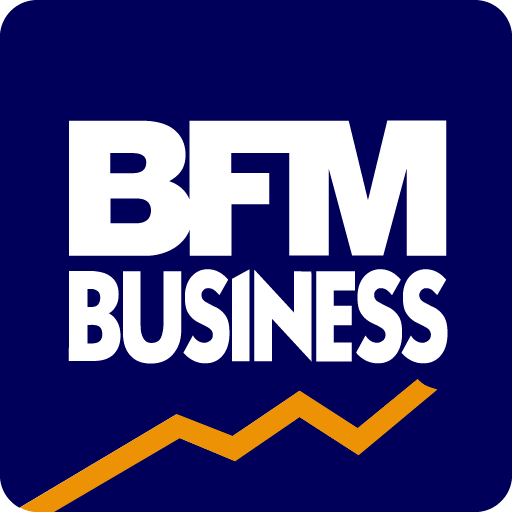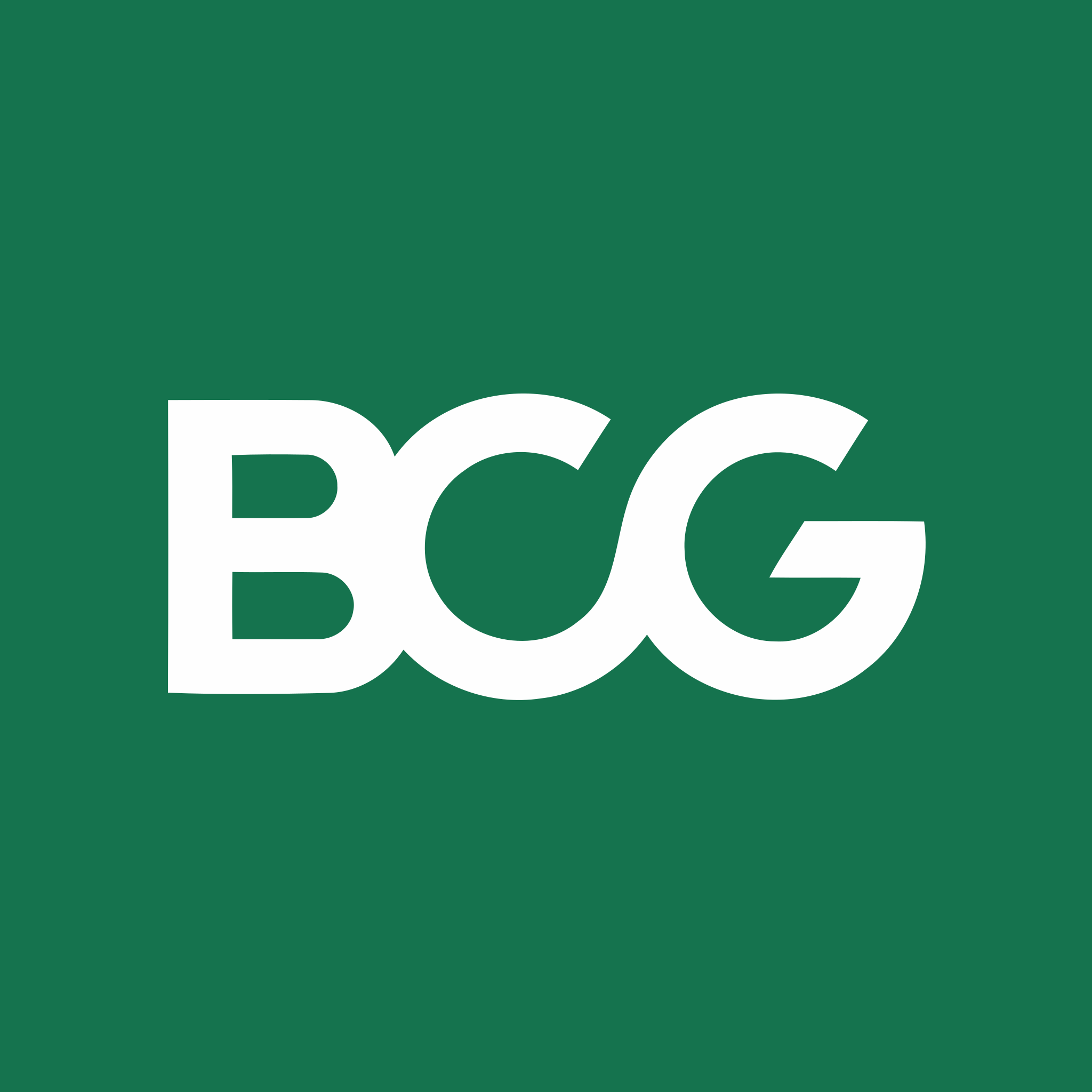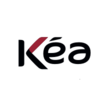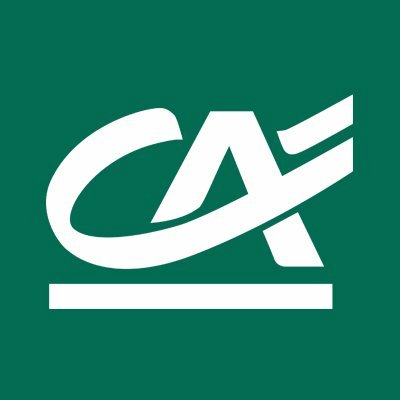Summary of our market study
The men's razor market has experienced various trends starting from 2020, reflecting a shift in consumer behavior and industry dynamics. The global razor market, valued at USD 23.08 billion in 2021, is projected to grow at a 5.8% CAGR, reaching USD 38.34 billion by 2030. Europe currently leads the market, but Asia, particularly India and China, is catching up rapidly with a projected CAGR of 11% until 2031. Despite this growth, the UK market demonstrates signs of contraction. In 2020, sales of electric shavers above £50 halved in the UK, while razors between £25 and £49 saw increased purchases. Notably, the UK's razor imports surged but fell by 11.6% post that year, with continuous declines observed in 2021. In the UK, frequent shaving also decreased from over 7 million men to 4.8 million. The influence of trends like #NoShaveNovember and rising inflation has impacted the shaving frequency and spending on razors. Innovation remains crucial, as exemplified by significant R&D investments by leading companies like Gillette.
Meanwhile, new market entrants such as Harry's and subscription services disrupt traditional players with online sales and direct-to-consumer models. This shift is underscored by traditional firms like Wilkinson Sword entering the subscription arena. The UK's foreign trade in razors reveals it as a net importer, with a significant import source being Poland due to its role as Gillette's production hub for Europe and Russia. In conclusion, the men's razor market is marked by a strong presence of established brands alongside nimble new players capitalizing on digital market trends, although consumer habits are leading to overall less frequent shaving.
Trends in Men's Razor Market Demand in the United Kingdom
In the United Kingdom, the men's razor market has been experiencing a shift in consumer preferences and buying habits. Over recent years, there has been a notable trend toward electric and battery-powered razors, which witnessed an increase of more than one million users. This aligns with the broader consumer inclination toward comfort and convenience in grooming. In contrast, 2020 marked a significant decline in high-priced electric shaver sales, with models above £50 nearly halving in sales, while those priced between £25 and £49 saw a rise in buyers. The UK market has also been grappling with changes in shaving frequency among men. Data reveals a downward trend, with daily shaving individuals dropping from over seven million to between four and five million by 2020. On the other end of the spectrum, those shaving infrequently, such as less than once a week, have increased from around two to over three million within the same timeframe. The COVID-19 pandemic and the tilt toward more relaxed lifestyles have lessened the emphasis on regular shaving, influencing market demand.
Consumer purchasing behavior also demonstrates a departure from traditional channels to online platforms, with 31% of shaving product buyers making their purchases via the internet in 2021. Social media and influencers play a significant role in shaping consumption trends, while online movements like #NoShaveNovember, with millions of mentions, are indicative of consumer participation in non-shaving activities negatively impacting razor sales. The rise of subscription services for razors presents an additional dimension to the market dynamics. Services offering periodic deliveries of grooming sets are gaining popularity, with offerings ranging from eco-friendly solutions to budget-friendly options. For example, yearly subscriptions for as low as £2.5 per set have been noted, encapsulating the market movement towards personalized and convenient purchase models, which also includes larger market players like Wilkinson Sword developing their own subscription services. In terms of competition, market giants continue to dominate, however, new entrants and online platforms are making waves. Companies like Harry's Inc., with its direct-to-consumer model, have disrupted the status quo, compelling traditional players to adjust their strategies and engage with digital channels. In summary, the UK men's razor market is adapting to changing consumer preferences, with a clear pivot toward comfort-oriented and less frequent shaving. Online shopping and subscription models are reshaping the traditional retail landscape as consumers demand more convenience and personalization. Despite these shifts, market leaders remain influential yet are being continually nudged by innovative competitors.
Key Players Shaping the Contours of the Men's Razor Market
The men's razor market is a landscape characterized by the presence of entrenched industry giants, innovative e-commerce disruptors, and traditional razor makers that champion quality craftsmanship. Within this competitive arena, a few companies stand out for their market influence, technological innovations, and brand legacy.
- Procter and Gamble (Gillette) - An Undisputed Market Leader At the pinnacle of the sector is Procter & Gamble, owner of the Gillette brand—synonymous with shaving for over a century. Gillette's dominance is augmented by continuous investment in research and development, and a business model that turned razorblade sales into an art form. Gillette's widespread consumer base and extensive product range, from the Mach3 to the Fusion series, affirm their position as a stalwart in the industry.
- Philips - Driving Innovation in Electric Shavers Global tech giant Philips has been a revolutionary force in the electric shaver segment. Inventor of the rotary head shaver, Philips has been catering to the comfort and convenience of men with varying facial hair types, consistently refining the technology behind their acclaimed shavers.
- Wilkinson Sword (Edgewell Personal Care Group) - An Expert in Precision Wilkinson Sword, now under Edgewell Personal Care Group, has been another key player with a rich history in razor manufacturing. Known for their Hydro series that integrates hydrating gel reservoirs, Wilkinson continues to balance innovation with a pledge to comfort and precision in shaving.
- BIC - The Go-To for Disposable Razors BIC has made a name for itself in the disposable razor market, providing affordable and convenient options for men worldwide. Though not as advanced as their competitors in certain areas, their commitment to providing budget-friendly products has carved them a significant niche.
- Braun (Procter and Gamble Group) Another Procter & Gamble brand, Braun, has built its reputation in the marriage of function and design. It’s recognized for its classic electric shavers that cater to customers seeking a quick, yet efficient shave without the hassle of more elaborate setups.
- Harry's - A Digital-Era Challenger Harry's Inc., although a relative newcomer, has made substantial waves with its direct-to-consumer model, offering sleek designs at competitive prices. The company's growth has been so impactful that it was acquired by Edgewell, as traditional players acknowledge and adapt to shifting market dynamics.
to understand this market
Detailed content of our market study
 Inforamtion
Inforamtion
- Number of pages : 35 pages
- Format : Digital and PDF versions
- Last update :
 Summary and extracts
Summary and extracts
1 Market overview
1.1 Definition and scope of the study
The men's razor market is a sub-segment of the men's hygiene and beauty market. The razor is a device used by men primarily for shaving facial hair. The razor market comprises several segments:
- Straight razors (razors that can be folded, used mainly by barbers)
- Electric shavers
- Disposable razors (often made of plastic, single use)
The global razor market is expected to grow strongly until 2025, mainly due to the increasing focus on men's grooming and consumer awareness on personal hygiene. Nevertheless, different geographical regions exhibit different uses of razors. For example, in Asia, disposable razors are more frequently used, while developed countries make greater use of electric razors.
In the United Kingdom, the shaver market is struggling due to consumer trends, including the increasing use of beards, and increased competition from foreign players and start-ups, which are putting downward pressure on prices and therefore on revenues.
The razor market is dominated by Gillette, a company with historical roots dating back to the 20th century and owned by Procter & Gamble.
Trends in the razor industry benefit from social networks and the influence of celebrities, who often use hairstyles that require the use of razors.
1.2 A global market in good shape
The global shavers market is in pretty good shape, estimated in **** at USD **.** billion and is expected to register a CAGR (***) of *.*% over the period ****-**** to reach USD **.** billion by ****.
shavers Market Size Evolution World, ****-****, $ billion Source: ****
In general, the end-user is more frequently male, which can help market players guide their strategy.
Currently, the global market is dominated by Europe with **.*% of the market share . However, this market could quickly be overtaken by the Asian market, which is growing at a phenomenal rate, such as the Indian and Chinese markets, which are expected to grow at a CAGR of **% until ****.[***]
The global market is largely dominated by the giant Procter & Gamber, which owns Gilette, Venus and Braun, three of the most active players in the men's shaving market. The group holds more than **% of the global shaver market, including **% of the men's electric shaver market. [***] The giant is therefore not immune to the main trend today, which is towards convenience and pleasure in grooming, which favors the development of electric shavers that continue to improve.
1.3 An increasingly weak national market
Given the limited data available on the men's shaving market in the UK, it is difficult to establish a clear market size. However, it is possible to establish the size of the market for everything related to hair removal and shaving, including creams and lotions. The graph below shows that the market has been shrinking continuously since **** , reaching a level around which it has been fluctuating and is expected to continue to do so in the years to come. The slight recovery in **** can be explained by the end of the work-at-home directive and the increase in social activities that have seen the population waiting to buy. In fact, razor blade sales are up **% and deodorant spending is up **% as Brits strive to make themselves presentable for the start of ****.[***]
shaving market size evolution and prediction United Kingdom, ****-*****, in billions of dollars Source: ****
Trends can also be established based on market segments, as with the chart below detailing the evolution of the amount of shaver sales produced in the UK (***). Thus, we can notice a strong recovery in **** compared to the year ****, with an increase of **.**% in the value of sales. The coronavirus crisis has made the year **** complicated for ...
1.4 Foreign trade
In order to report on the UK's foreign trade in razors, we use the UN Comtrade platform, using the code **** which includes: "Razors and razor blades (***)".
Thus, we can say that in ****, the United Kingdom is a net importer of razors, with a foreign trade coverage rate of **.**%. In ****, the country imported a total value of $ ***.*** million and exported $ **.*** million. The source of imports is detailed in the graph below:
Source of razor imports United Kingdom, ****, in millions of dollars Source: ****
It can be seen that the country most represented in the UK's shaver imports is largely Poland. This can be explained by the fact that Gilette, one of the major players in the shaver market, has chosen to locate its production and distribution center for Europe and Russia in Poland. poland is followed by Czechoslovakia, then France and China.
Main export destinations for shavers United Kingdom, ****, in thousands of dollars Source: UN Comtrade It can be seen from the chart above that the UK's top partner for shaver exports is China. It is followed by Poland, Israel, and Czechoslovakia, all of which top out at over $* million in imports from the UK.
evolution of the amount of razor imports United ...
2 Analysis of the demand
2.1 Consumers who are increasingly turning to comfort
Until ****, the number of razor users in the UK was constant with only slight variations by type of razor used, as shown in the graph below.
change in the number of people using razors by type United Kingdom, ****-****, in thousands of units Source: ****
Thus, it can be seen from the graph that the winning type of razors in the ****-**** period are electric and battery-powered razors, which gained more than one million users. This confirms the current trend of using devices that allow a more comfortable grooming, just like this type of shavers. The graph below confirms the popularity of electric shavers and the amount of money that British people are willing to spend on them.
Number of people buying electric shavers for men United Kingdom, ****-****, in thousands Source: Kantar we can see that the year **** has seen an almost halving of sales of electric shavers priced above £** . Instead, it is those priced between £** and £** that have enjoyed more buyers since **** . Comparing the number of buyers to the total, **** is a year that sees a decline in new buyers compared to **** which was the year with the most customers for electric shavers over the ****-**** period. (***)
2.2 Shaving less and less frequently
Although the razor remains the reflex tool for a man to shave and substitutes for shaving with razors are few, more expensive and less convenient, there is a downward trend in the use of razors by the British.
change in men's shaving frequency United Kingdom, ****-****, in millions Source: Kantar The graph above clearly shows the downward trend in frequent shaving, as daily shaving dropped from over * million men in **** to *.* million in **** . conversely, infrequent shaving is on the rise, such as shaving less than once a week, which affected *.*** million British men in ****, rising to over *.* million in ****. Furthermore, in ****, *.*** million men shaved twice a week and *.*** only once a week.
The COVID ** crisis combined with increasingly casual lifestyles have led to a decline in interest in frequent shaving and have given way to the fashion for untrimmed beards, posing a continued threat to the shaving market.
2.3 New ways of consuming
Beyond less frequent use, consumers are changing their purchasing habits. Indeed, with the advent of social networks and online consumerism, traditional channels are increasingly abandoned in the shaving market. Thus, Mintel informs us that in ****, **% of shaving product buyers have purchased their products online.
Social networks can influence the consumption of their users, especially on cosmetics and shaving products, through the intervention of influencers with a large community who promote specific products on their accounts. These influencers use different channels such as Youtube (***) or all the social networks like the brand Harrys which accumulates ***K followers on Instagram, which can constitute a more than interesting customer base.
These same networks do not only influence the consumer on the type of products purchased, but also on the frequency of his shaving. Indeed, some initiatives encourage men to shave more or less, the most famous to date being the #NoShaveNovember which encourages the users of the networksthe most famous one is the #NoShaveNovember which encourages users of the networks, every year in November, not to shave for the whole month. This hashtag, which appeared in ****, has become very popular and in **** it totals more than *.*** million posts with its mention . [***] It is then ...
3 Market structure
3.1 Business model and most popular brands
The larger , older shaving brands are increasingly being challenged by smaller players, as discussed earlier. There are strong opportunities for brands to use direct and digital interactions to better understand their consumers and use them to drive marketing and launch activities. However, traditional players such as Wilkinson Sword, Gilette or Bic for disposable razors are still very much present in the market. They share a major part of the market and sometimes rely on very specific business models.
We can also mention the brand Gilette, which is based on a business model invented by its creator and which has been adopted by many companies for their products such as Nespresso coffee makers, Playstation and many others. This business model can be summarized in one sentence, that of its creator King Kamp Gilette: "Give them the razor, sell them the blades! It's all about selling the main item at a low price (***), and selling items/refills afterwards that allow it to work with high margins . [***] It is with this method that Gilette has become a major player in the men's razor market, as can be seen on the "best selling men's razors" category of Amazon in the UK:
Source: ****
This chart is ...
3.2 R&D at the heart of the market players' strategy
Here again, we can distinguish between manufacturers of mechanical and electric shavers, around whom the organization and dynamics of the market are based.
The organization of the mechanical shaver industry is quite simple:
Suppliers of raw materials such as steel or plastic for the handle Manufacturers (***) as major players, who own their own factories Distributors, mainly mass-market retailers.
R&D and marketing are also crucial issues for manufacturers. The leaders in the sector stand out for their significant investments in innovation. For example, for the Mach*, a flagship model, Gillette spent more than $*.* billion on marketing and R&D, and more than $* billion for the Gillette Fusion, with more than ** patents registered [***]. Gillette has an observation center in England where consumers come to use products and an innovation center in Boston where innovation is then realized. In addition, the company also innovates in terms of technologies integrated into its products. In ****, it created the GiletteLabs, which aims to maintain innovation within the company, with, for example, the recent addition to the catalog of a heated razor that would allow greater comfort when shaving.
3.3 New players shaking up traditional players
Even if the giants such as Wilkinson, Gilette, Braun or Bic monopolize the market of men's razors, new trends come to shake up this order with ideas that attract many customers. Among these trends, we find the online sales which quickly came to bother the big players of the market, with notably the company Harry's Inc which developed by selling elegant razors at low prices on the Internet, before developing its physical sales stores. Faced with this rapid growth of a competitor and in order to establish itself properly on the Internet thanks to an ally that is already well established, the parent of Wilkinson Blade, Edgewell, bought the razor sales site in **** for $*.** billion, a testament to the growing strength of these players in the market.[***]
More than the online market, it's now the men's razor subscription services that are hot. This concept is based on a rhythmic and automated delivery (***) which can be more or less supplied with blades, creams... There is already a wide range of products in this market segment, which is also driven by offers increasingly turned towards eco-responsibility. The website Men'sHealth has compiled a ranking of the best men's razor subscriptions in the UK in ...
4 Analysis of the offer
4.1 Types of razors and prices
There are different main families of razors, each with its own price range.
The cabbage cutter
The cabbage cutter, also known as a straight razor, is for those who appreciate a traditional shave. It is very precise and requires a little training to sharpen it and use it safely. The advantage of the straight razor is its long life, which can make it extremely cost effective. However, it may require many additional accessories such as certain lotions, sharpeners, shaving brushes and the like.
Prices for straight razors vary depending on the range, ranging from £*.** to £***.MyCoupe. Barbechic
The electric shaver
The electric shaver allows a quick and rather precise shave. It can be used without cream, because it is almost impossible to cut yourself with it. There are two types of shavers within the electric shaver family: the rotary head shaver and the vibrating blade shaver.The rotary head shaver, invented by Philips in ****, is made up of round foils with rotating blades. This type of razor allows for a quick and fairly precise shave, and is more generally intended for soft beards.Theshaver with vibrating blades has a rectangular head, equipped with a micro perforated grid under which the blades ...
4.2 High-margin products but falling prices in the face of competition
Overview of the latest products offered on the razor market in the UK according to their specificities:
Hydrating: A razor that diffuses a moisturizing gel, the objective being a perfect distribution of the gel. Example: Hydro * from Wilkinson, a sensitive version exists for sensitive skin Price: £**.** for * blades[***] Premium: The premium is measured by the number of blades, the more you increase, the more the glide and comfort of shavers is obvious. Example : Bic Flex * and Flex *, the specialist of one blade or * disposable blades, tries to convince of the advantages in terms of glide and comfort Price: * Flex * blades for £*.**[***] Hybrid: This razor can shave, trim or contour a beard. It's an all-in-one solution. Example: OneBlade by Philips Price: £**.** for * blades[***] Classic electric shaver: Example: Braun Series * Price: £***.**[***]
4.3 An increasingly qualitative and personalized offer
Blades are of better quality, a movement directly resulting from the huge R&D budgets of the major razor companies. Products last longer (***) by offering standard products with less frequent blade quality improvements and thus lowering the average price of its razors. Nevertheless, blades are improving overall.
Manufacturers are also trying to personalize their offer by adapting to fashion and developing products more related to beard size rather than close shaving.
The trend is also towards unique products, with Gillette going so far as to offerRazor Marketin ****, a customizable razor, the concept is simple: Gillette gives its consumers the opportunity to *D print the handle of their razor.We also see today a trend towards the return of ***% British razors, like Edwin Jagger, a national brand that is recognized worldwide on the razor market.
5 Regulation
5.1 A product whose regulations are changing with the Brexit
The razor market is relatively unaffected by the regulations, however, blades remain a product that can be turned into a weapon. For airplanes, disposable razors are allowed while traditional razors (***) are prohibited.
Brexit-related changesHowever, it is, like most products sold in the UK, subject to Brexit-induced changes in regulations. Razors are included in the larger package of cosmetics and skin care. In this area, the main changes are in the labeling. Indeed, since January *, ****, a "Responsible Person" of the European Union and one of the national territory must be mentioned on the product label if the sale is made on the territory. Information on the country of production of the product must also be added to the label:
If the product is manufactured in the UK and sold in the EU, the words "Made in the UK" must be added to the label. If the product is manufactured in the EU and sold in the UK, the words "Made in the EU" must be added to the label.
Only products that meet these new labeling requirements can be sold in the UK and EU markets as of February *, ****.
Source: ****
6 Positioning of the actors
6.1 Segmentation
The segmentation of companies in the shaver sector is extremely simple, the companies are mainly manufacturers of shavers, whether electric or mechanical.
The market has very few companies, and is almost duopolistic for all types of shavers. Especially since the brands are often grouped together as subsidiaries of other larger groups. This is the case of Braun, marketed by The Gillette Company, itself a subsidiary of Procter and Gamble.
- Procter & Gamble
- BIC Groupe
- Gillette (Procter & Gamble)
- Braun (Procter & Gamble)
- Edgewell Personnal Care Group - Wilkinson
- Harry's Shave
- Edwin Jagger
All our studies are available online in PDF format
Take a look at an example of our research on another market!
 Choosing this study means :
Choosing this study means :
Access to more than 35 hours of work
Our studies are the result of over 35 hours of research and analysis. Using our studies allows you to devote more time and added value to your projects.
Benefit from 6 years' experience and over 1,500 industry reports already produced
Our expertise enables us to produce comprehensive studies in all sectors, including niche and emerging markets.
Our know-how and methodology enable us to produce reports that offer unique value for money.
Access to several thousand articles and paid-for data
Businesscoot has access to all the paid economic press as well as exclusive databases to carry out its market research (over 30,000 articles and private sources).
To enhance our research, our analysts also use web indicators (semrush, trends, etc.) to identify market trends and company strategies. (Consult our paying sources)
Guaranteed support after your purchase
A team dedicated to after-sales service, to guarantee you a high level of satisfaction. +44 238 097 0676
A digital format designed for our users
Not only do you have access to a PDF, but also to a digital version designed for our customers. This version gives you access to sources, data in Excel format and graphics. The content of the study can therefore be easily retrieved and adapted for your specific needs.
 Our offers :
Our offers :
The men's razor market | United Kingdom
- What are the figures on the size and growth of the market?
- What is driving the growth of the market and its evolution?
- What is the positioning of companies in the value chain?
- Data from several dozen databases
5 reports pack (-15%) UK United Kingdom
- 5 reports at €75.6 excluding VAT per study to choose from our UK catalogue for 12 months
- Save 15% on additional studies purchased
- Choose to be refunded any unused credit at the end of the 12-month period (duration of the pack)
See the terms and conditions of the pack and the refund of unused credit.


















